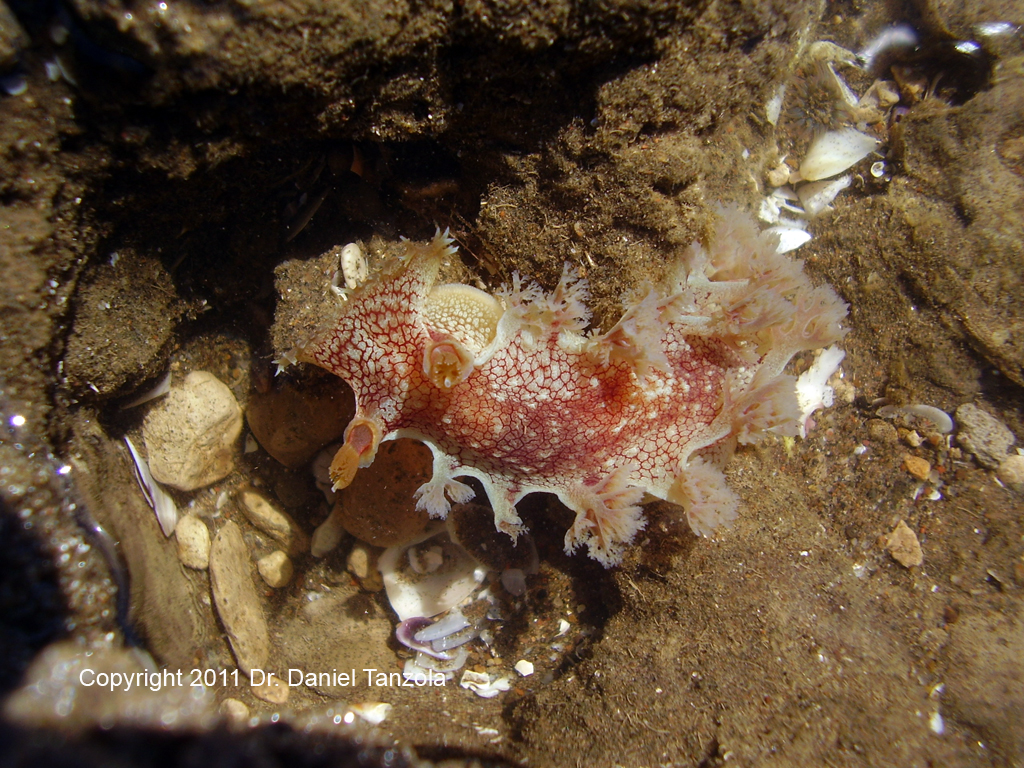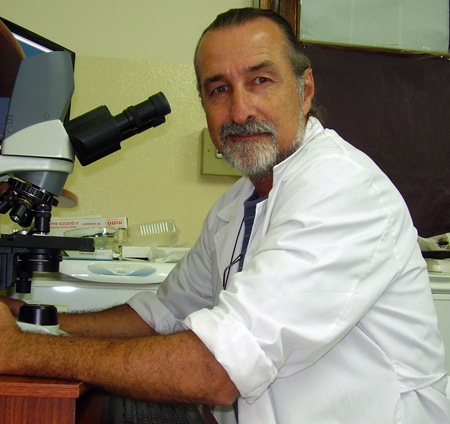 |
Marionia blainvillae
Image courtesy of Dr. Ruben Daniel TanzolaMonte Hermoso beach, Argentina
While this sighting is too far south to have been included in our Caribbean Sea Slugs field guide, it would not have too late anyway, as this is the first sighting of this species on the shore of South America. Marionia blainvillae is well known from western Mediterranean and adjacent Atlantic waters, but until now has not been documented from the western Atlantic. If I am correct with its ID this is quite a find, but not the first time a species from the eastern Atlantic, has shown up on the west side of the ocean. Other examples include Hypselodoris picta, Lomanotus vermiformis, Scyllaea pelagic, Placida verticilla, Hermaea bifida, Cyerce cristallina, Aplysia dactyomela, Notarchus punctatus and Doriopsilla areolata, to mention a few.
The coloration and pattern in Dr. Tanzola's photo matches the description of the animal perfectly. As does the morphology of the gill branches. It is quite variable in color however - adults ranging from a pale translucent orange to a deeper reddish brown with irregular patches of white. The dorsum is covered in low tubercles, each outlined with a red line which forms a network over the body.
In the Mediterranean and eastern Atlantic this species is observed to feed on octocorals, including Alcyonium acaule, A. palmatum, Eunicella cavolinii, E. singularis, E.sp., Leptogorgia sarmentosa, and Paramuricea clavata.
It would be great to learn what it is feeding on in Argentina. Great find guys.
Gig Harbor, Washington
Mar., 2012
Dr. Daniel Tanzola
 |
This specimen was collected in the intertidal of Monte Hermoso beach, Argentina (38º 59' S 61º 41' W), during low tide. These nudibranchs were detected by us, for the first time in February 2011. This year they returned in January in hot weather and winds from the North. They arrive at the beach in a poor condition of health, exhausted or dying. I've seen actively swim on the surface 200 or 300 metres from the shore, but commonly in low tide, it may be found associated to bivalves communities (mussels) from hard bottoms. Largest individuals measured 90 mm in length, have 13 pairs of dorsolateral brownish processes (gills) and two frontal lobes with 16-18 digitiform processes. The rhinophores have a yellowish crown. The dorsal background color is pink with a lattice purple that defines numerous small white blisters. The foot is yellowish. We are biologists working on pathology of aquatic organisms from the Bahia Blanca estuary and Monte Hermoso beach, in the Southwest of Buenos Aires province, Argentina. Vicepresidente de la Asociación Parasitológica Argentina (2009-2012) Profesor Adjunto Ded. Exclusiva Patología de Organismos Acuáticos Parasitología Depto. Biología, Bioquímica y Farmacia Universidad Nacional del Sur San Juan 670 (800) Bahía Blanca ARGENTINA Tel/Fax: 54-291-459-5130 Send Dr. Tanzola email at rtanzola@uns.edu.ar |

|
